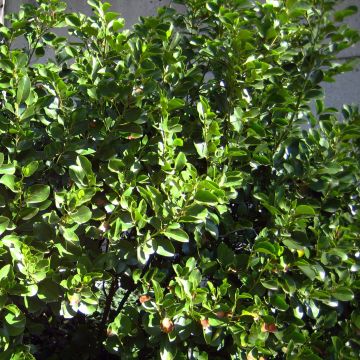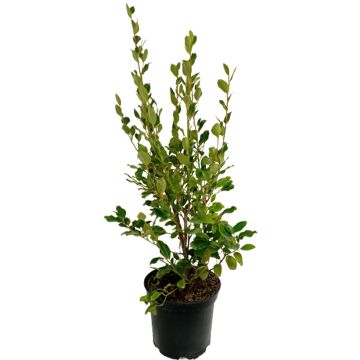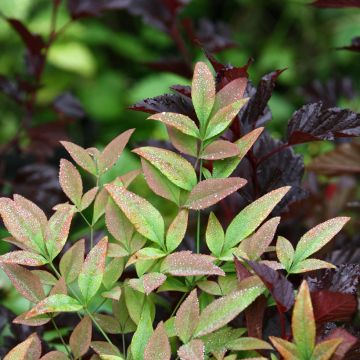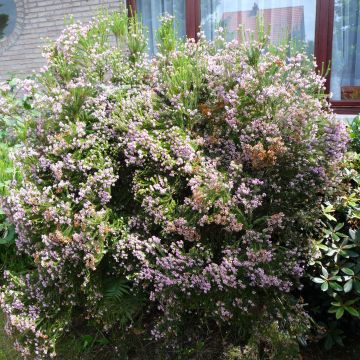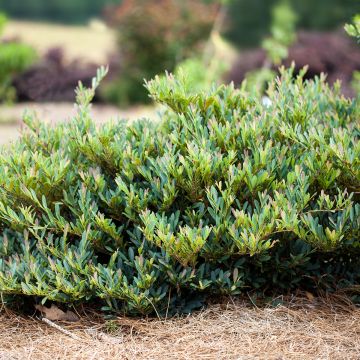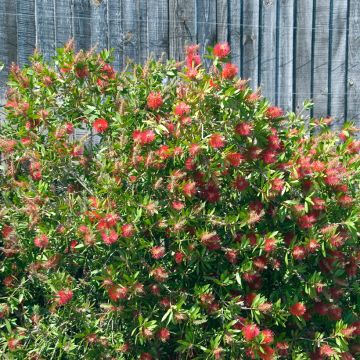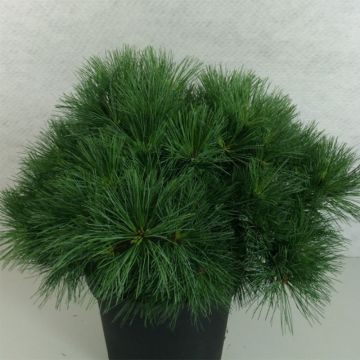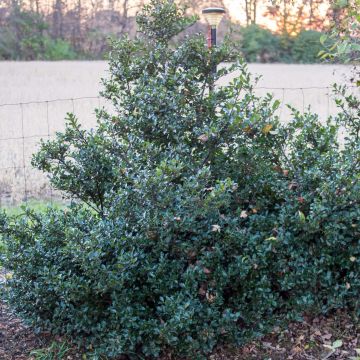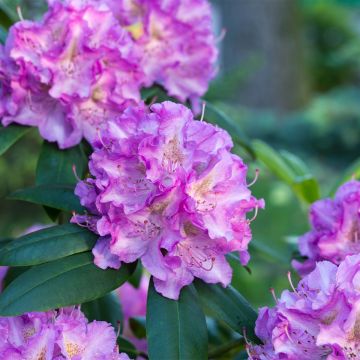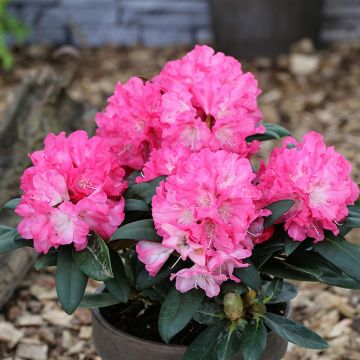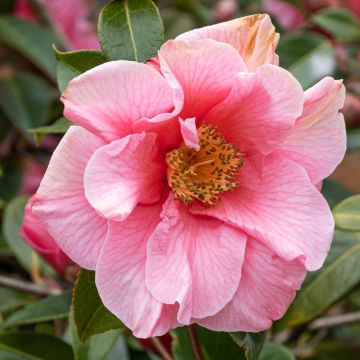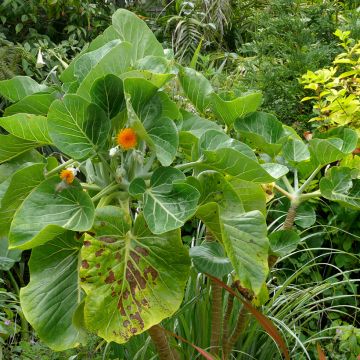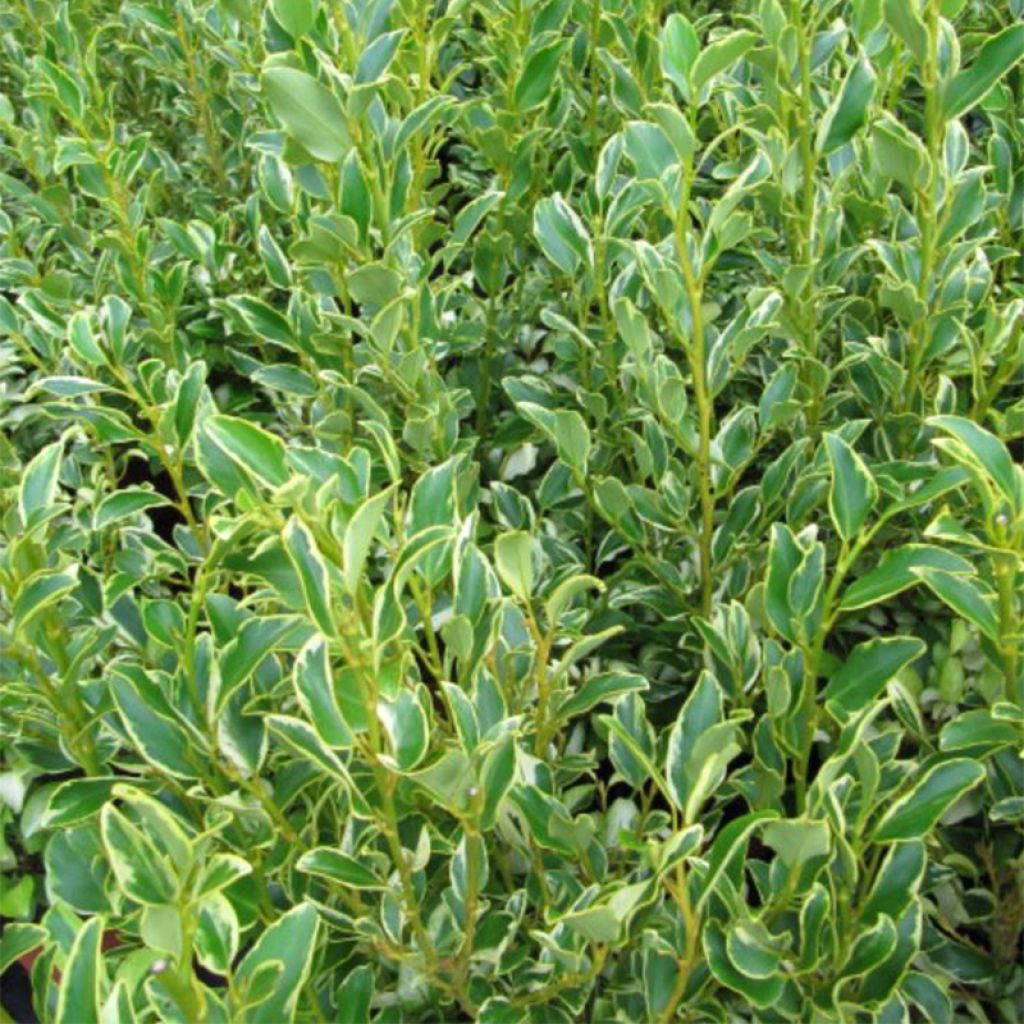

Griselinia littoralis Green Jewel
Griselinia littoralis Green Jewel
Griselinia littoralis Green Jewel
New Zealand Broadleaf, Kapuka, New Zealand Laurel, New Zealand Privet
Very disappointed, one of the 2 griselines is completely dried up or frozen, I don't know. Strange to send plants in such bad condition!
Sylvie, 14/01/2024
This plant carries a 24 months recovery warranty
More information
We guarantee the quality of our plants for a full growing cycle, and will replace at our expense any plant that fails to recover under normal climatic and planting conditions.
From €5.90 for pickup delivery and €6.90 for home delivery
Express home delivery from €8.90.
Does this plant fit my garden?
Set up your Plantfit profile →
Description
Griselinia littoralis Green Jewel is a variety of Coastal griselinia that stands out for its compact growth, but above all for its magnificent foliage, randomly edged and spotted with yellow and cream, finer than that of the species. Originating from a dense evergreen bush from New Zealand, sometimes called English Holly, this selection is very well adapted to coastal areas, in a windbreak hedge. Extremely bright and shimmering in the sun, this Griselinia will also be very elegant in a small urban garden or in a large pot on a terrace, to be protected in winter in cold regions.
Griselinia littoralis is a shrub from the dogwood family. It is endemic to New Zealand, where it grows in coastal forests up to 900 m in altitude. While it can form a true tree with multiple trunks reaching 12 m in height in its natural environment, it will not exceed 3 m in height and 2.50 m in width under our climates and will remain even smaller in pots.
The cultivar 'Green Jewel' was selected in New Zealand. Its hardiness does not exceed -8°C (17.6 °F) once mature. The habit of this shrub is upright, very bushy and dense, reaching about 2 m in height at maturity and 1.50 m in width. Its growth is quite fast in slightly chalky and deep soil. In very chalky soil, it will be greatly reduced. Its trunk and branches, quite flexible, are covered with a smooth bark that is yellow-green when young, becoming ochre-grey and fissured over time. The foliage, more or less evergreen depending on the severity of the winter, is composed of upright, ovate, incurved leaves, 4 to 10 cm long, irregularly toothed along the edge. The texture of the young leaves is fine and flexible, then they become thick, almost succulent, leathery and very glossy when mature. Their colour is dominated by yellow or cream, but some leaves can be completely green. The flowering, in May-June, is more abundant in the sun, but not very noticeable : it takes the form of small axillary panicles composed of about a hundred small flowers without petals, green-yellow in colour. While it often goes unnoticed to our eyes, it attracts a large number of pollinating insects that gather a bountiful harvest of pollen from it. As this shrub is dioecious, only the female plants will bear fruit, provided a male plant is planted nearby. These clusters of fruits are composed of small ovoid, acid-green berries, which turn black when ripe and contain only one seed.
Griselinia littoralis Green Jewel is mainly planted in the ground in coastal gardens. This shrub can be used to create a shared hedge or a property boundary to protect the garden from wind and prying eyes. It can also be placed near an entrance or on either side of a gate. The plant adapts well to container cultivation, placed on a terrace or balcony. This cultivation method allows gardeners in cold regions to protect it from severe cold in an unheated greenhouse or conservatory in winter. Its height will be less significant in pots, but the plant will quickly fill the available space by spreading. In the ground, it can also be used in a grove, alone or in association with other evergreen shrubs such as purple laurel, Photinia Pink Marble, Elaeagnus ebbingei, Evergreen Ceanothus or Pittosporum. It will also be very useful to create a dense screen on the edge of a terrace, facing the prevailing winds.
Report an error about the product description
Plant habit
Flowering
Foliage
Botanical data
Griselinia
littoralis
Green Jewel
Griseliniaceae (Cornaceae)
New Zealand Broadleaf, Kapuka, New Zealand Laurel, New Zealand Privet
Oceania
Other Griselinia
Planting and care
The Green Jewel Griselinia littoralis is best planted in spring, after the last frost in cool climates, or in September-October in warmer and drier climates in summer. Its hardiness does not exceed -7/-10 °C in perfectly drained soil and sheltered from dry and cold winds. Its foliage becomes deciduous in very cold winters or in prolonged freezing periods. Therefore, it is not recommended to use it in regions with harsh and humid winters. It adapts to any ordinary soil, properly loosened and well-drained, but prefers a light, sandy, humus-rich, deep soil with not too much limestone, remaining moist to support its growth. This bush dislikes heavy and waterlogged soils in winter and it proves to be quite drought-resistant once well-established. It should be given a sunny exposure, but not scorching, or partially shaded in hot climates. This bush will be more floriferous in the sun.
It can tolerate light pruning: Prune as needed 1 to 2 times a year, after flowering, in early or late summer. Shorten the branches that hinder the harmony of the shape. The cuts must be clean and made with a well-sharpened and clean tool.
Insects and diseases:
The Griselinia is not subject to attacks from pests. However, some fungal diseases are present in humid soil and climate: spots may appear on the leaves.
Planting period
Intended location
Care
-
, onOrder confirmed
Reply from on Promesse de fleurs
Evergreen shrubs
Haven't found what you were looking for?
Hardiness is the lowest winter temperature a plant can endure without suffering serious damage or even dying. However, hardiness is affected by location (a sheltered area, such as a patio), protection (winter cover) and soil type (hardiness is improved by well-drained soil).

Photo Sharing Terms & Conditions
In order to encourage gardeners to interact and share their experiences, Promesse de fleurs offers various media enabling content to be uploaded onto its Site - in particular via the ‘Photo sharing’ module.
The User agrees to refrain from:
- Posting any content that is illegal, prejudicial, insulting, racist, inciteful to hatred, revisionist, contrary to public decency, that infringes on privacy or on the privacy rights of third parties, in particular the publicity rights of persons and goods, intellectual property rights, or the right to privacy.
- Submitting content on behalf of a third party;
- Impersonate the identity of a third party and/or publish any personal information about a third party;
In general, the User undertakes to refrain from any unethical behaviour.
All Content (in particular text, comments, files, images, photos, videos, creative works, etc.), which may be subject to property or intellectual property rights, image or other private rights, shall remain the property of the User, subject to the limited rights granted by the terms of the licence granted by Promesse de fleurs as stated below. Users are at liberty to publish or not to publish such Content on the Site, notably via the ‘Photo Sharing’ facility, and accept that this Content shall be made public and freely accessible, notably on the Internet.
Users further acknowledge, undertake to have ,and guarantee that they hold all necessary rights and permissions to publish such material on the Site, in particular with regard to the legislation in force pertaining to any privacy, property, intellectual property, image, or contractual rights, or rights of any other nature. By publishing such Content on the Site, Users acknowledge accepting full liability as publishers of the Content within the meaning of the law, and grant Promesse de fleurs, free of charge, an inclusive, worldwide licence for the said Content for the entire duration of its publication, including all reproduction, representation, up/downloading, displaying, performing, transmission, and storage rights.
Users also grant permission for their name to be linked to the Content and accept that this link may not always be made available.
By engaging in posting material, Users consent to their Content becoming automatically accessible on the Internet, in particular on other sites and/or blogs and/or web pages of the Promesse de fleurs site, including in particular social pages and the Promesse de fleurs catalogue.
Users may secure the removal of entrusted content free of charge by issuing a simple request via our contact form.
The flowering period indicated on our website applies to countries and regions located in USDA zone 8 (France, the United Kingdom, Ireland, the Netherlands, etc.)
It will vary according to where you live:
- In zones 9 to 10 (Italy, Spain, Greece, etc.), flowering will occur about 2 to 4 weeks earlier.
- In zones 6 to 7 (Germany, Poland, Slovenia, and lower mountainous regions), flowering will be delayed by 2 to 3 weeks.
- In zone 5 (Central Europe, Scandinavia), blooming will be delayed by 3 to 5 weeks.
In temperate climates, pruning of spring-flowering shrubs (forsythia, spireas, etc.) should be done just after flowering.
Pruning of summer-flowering shrubs (Indian Lilac, Perovskia, etc.) can be done in winter or spring.
In cold regions as well as with frost-sensitive plants, avoid pruning too early when severe frosts may still occur.
The planting period indicated on our website applies to countries and regions located in USDA zone 8 (France, United Kingdom, Ireland, Netherlands).
It will vary according to where you live:
- In Mediterranean zones (Marseille, Madrid, Milan, etc.), autumn and winter are the best planting periods.
- In continental zones (Strasbourg, Munich, Vienna, etc.), delay planting by 2 to 3 weeks in spring and bring it forward by 2 to 4 weeks in autumn.
- In mountainous regions (the Alps, Pyrenees, Carpathians, etc.), it is best to plant in late spring (May-June) or late summer (August-September).
The harvesting period indicated on our website applies to countries and regions in USDA zone 8 (France, England, Ireland, the Netherlands).
In colder areas (Scandinavia, Poland, Austria...) fruit and vegetable harvests are likely to be delayed by 3-4 weeks.
In warmer areas (Italy, Spain, Greece, etc.), harvesting will probably take place earlier, depending on weather conditions.
The sowing periods indicated on our website apply to countries and regions within USDA Zone 8 (France, UK, Ireland, Netherlands).
In colder areas (Scandinavia, Poland, Austria...), delay any outdoor sowing by 3-4 weeks, or sow under glass.
In warmer climes (Italy, Spain, Greece, etc.), bring outdoor sowing forward by a few weeks.

































